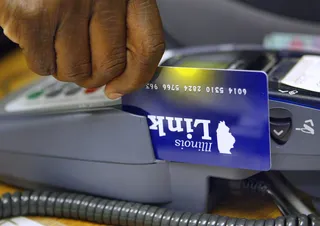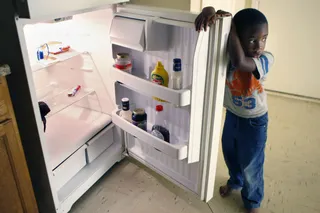How a Cut to Food Stamps Disproportionately Affects Black America
How cuts to the program would affect African-Americans.

1 / 11
What the New Bill Means for Black America - House Republican leaders have long debated the approximately $80 billion spent annually on Supplemental Nutrition Assistance Program (SNAP) benefits. In a 217-210 vote on Thursday, the House voted to slash billions of dollars in the SNAP budget. Here’s a look at what this could mean for African-Americans across the nation. —Dominique Zonyéé (Photo: Alex Wong/Getty Images)

2 / 11
Who is in SNAP? - According a to a report from the GOP, one in seven, or around 47.8 million Americans, were using food stamps, now known as the Supplemental Nutrition Assistance Program, or SNAP, in June 2013.(Photo: Joe Raedle/Getty Images)

3 / 11
How Much Money Will the New Bill Cut From SNAP Benefits? - If passed, the new bill would cut $39 billion or 5 percent of SNAP spending annually. Even with cuts, the food stamp program would cost more than $700 billion over the next 10 years.(Photo: Tim Boyle/Getty Images)
Photo By Photo: Tim Boyle/Getty Images

4 / 11
Will Eligibility Change? - The bill will require those who can physically work — adults between 18 and 50 without minor children — to find a job or to enroll in a work-training program in order to receive benefits. It will also limit the amount of time recipients can be enrolled in SNAP.(Photo: Scott Olson/Getty Images)

5 / 11
What Percentage of the African-American Population Receives Food Stamps? - A total of 18 percent of American adults (18 and over) have received food stamps. According to a 2012 Pew Research Center study, 31 percent of African-Americans have received food stamps compared to 15 percent of white Americans. Food stamps constitute 26 percent of total monthly income for a typical African-American family in the SNAP program.(Photo: Tim Boyle/Getty Images)
ADVERTISEMENT

6 / 11
A Racial and Gender Breakdown of Food Stamp Recipients - About 4 out of 10 Black women, or 39 percent, have received food stamps compared with 21 percent of Black men. Meanwhile, 19 percent of white women receive food stamps compared to 11 percent of white males.(Photo: REUTERS/Jessica Rinaldi)

7 / 11
Decrease to Come in November - In response to the national economic crisis, the Recovery Act boosted the budget for food stamps in 2009. But the increase will end in November 2013. For families of three, the amount will be cut down by $29 a month, averaging less than $1.40 per person per meal in 2014, according to the Center on Budget and Policies Priorities.(Photo: Karen Pulfer Focht / The Commercial Appeal /Landov)
Photo By Karen Pulfer Focht / The Commercial Appeal /Landov

8 / 11
Drug Tests for Food Stamps? - Another stipulation of the bill will include allowing states to require food stamp recipients to be tested for drugs.(Photo: Ron Wurzer/Getty Images)

9 / 11
A Divided House - While Republicans have been pushing for the bill, many Democrats have shunned the bill stating that millions will be plunged into poverty at the loss of SNAP benefits. “This bill makes getting Americans back to work a priority again for our nation’s welfare programs,” House Speaker John A. Boehner said.(Photo: Chip Somodevilla/Getty Images)

10 / 11
A Divided Nation - Studies show that African-Americans and Latinos receive food stamps at higher rates than other races. Latinos and Blacks also make up a majority of the nation’s poverty rate with 7.2 percent and 25.6 percent, respectively, according to a U.S. Census Bureau report. (Photo: Spencer Platt/Getty Images)
